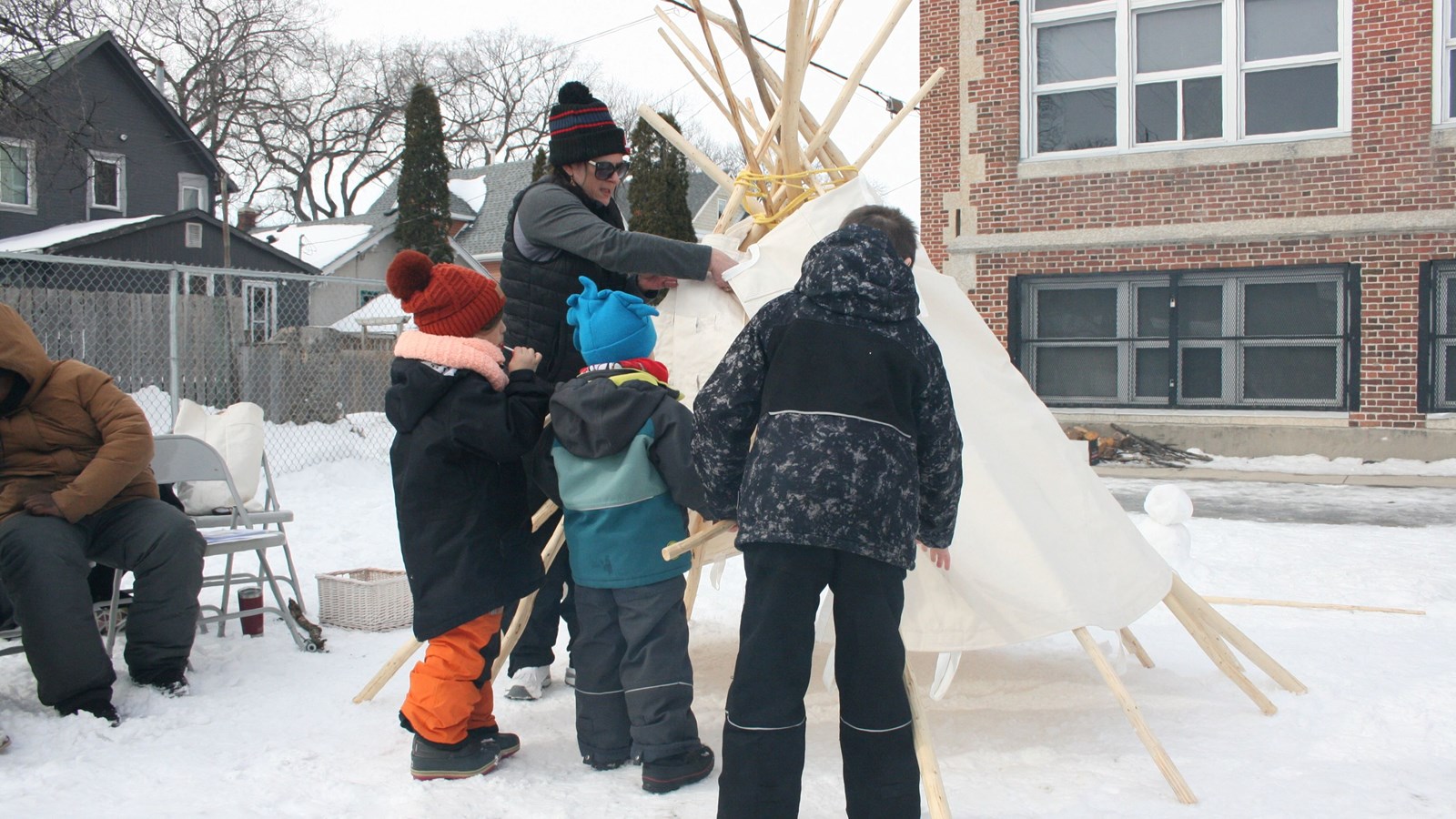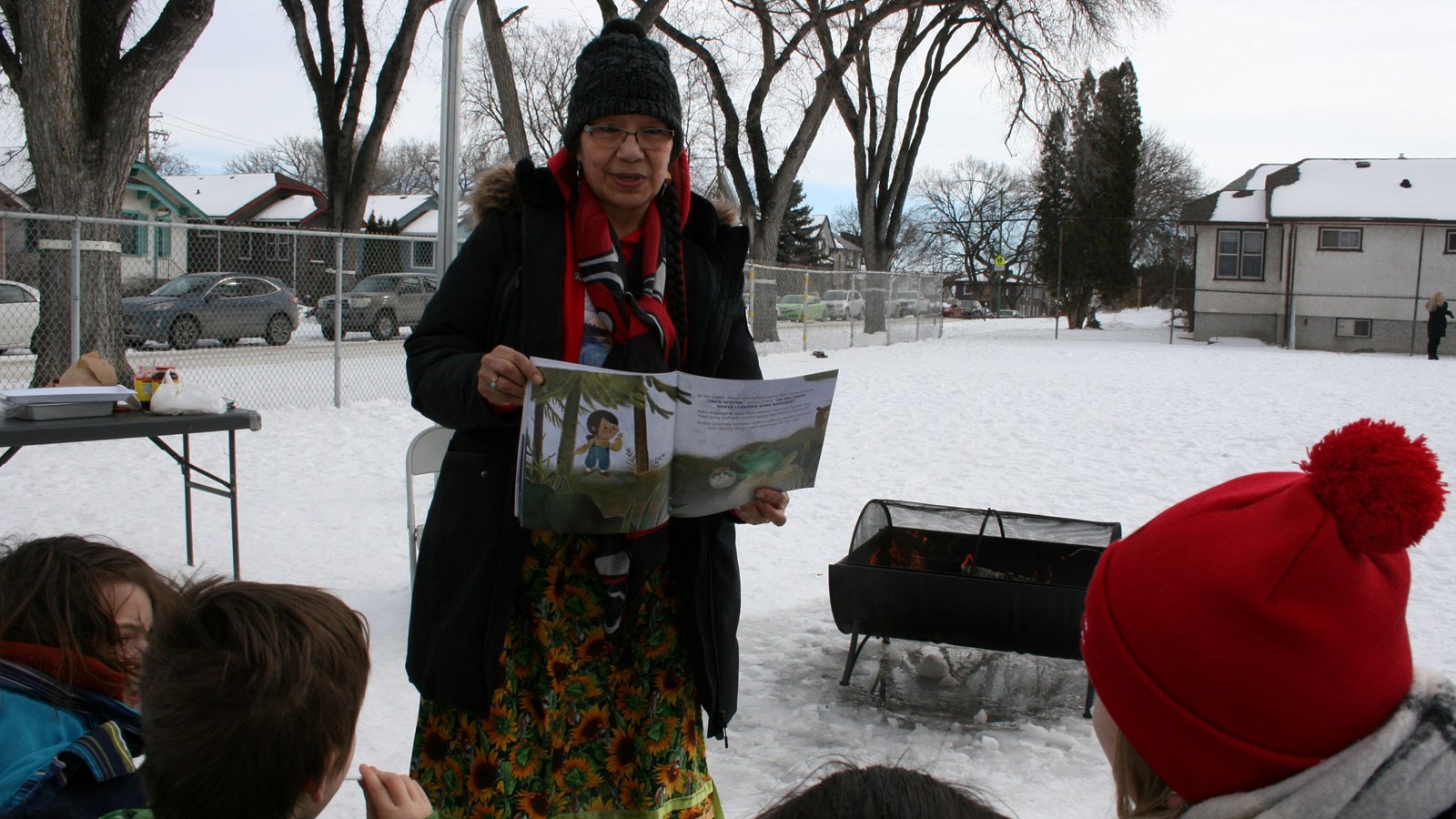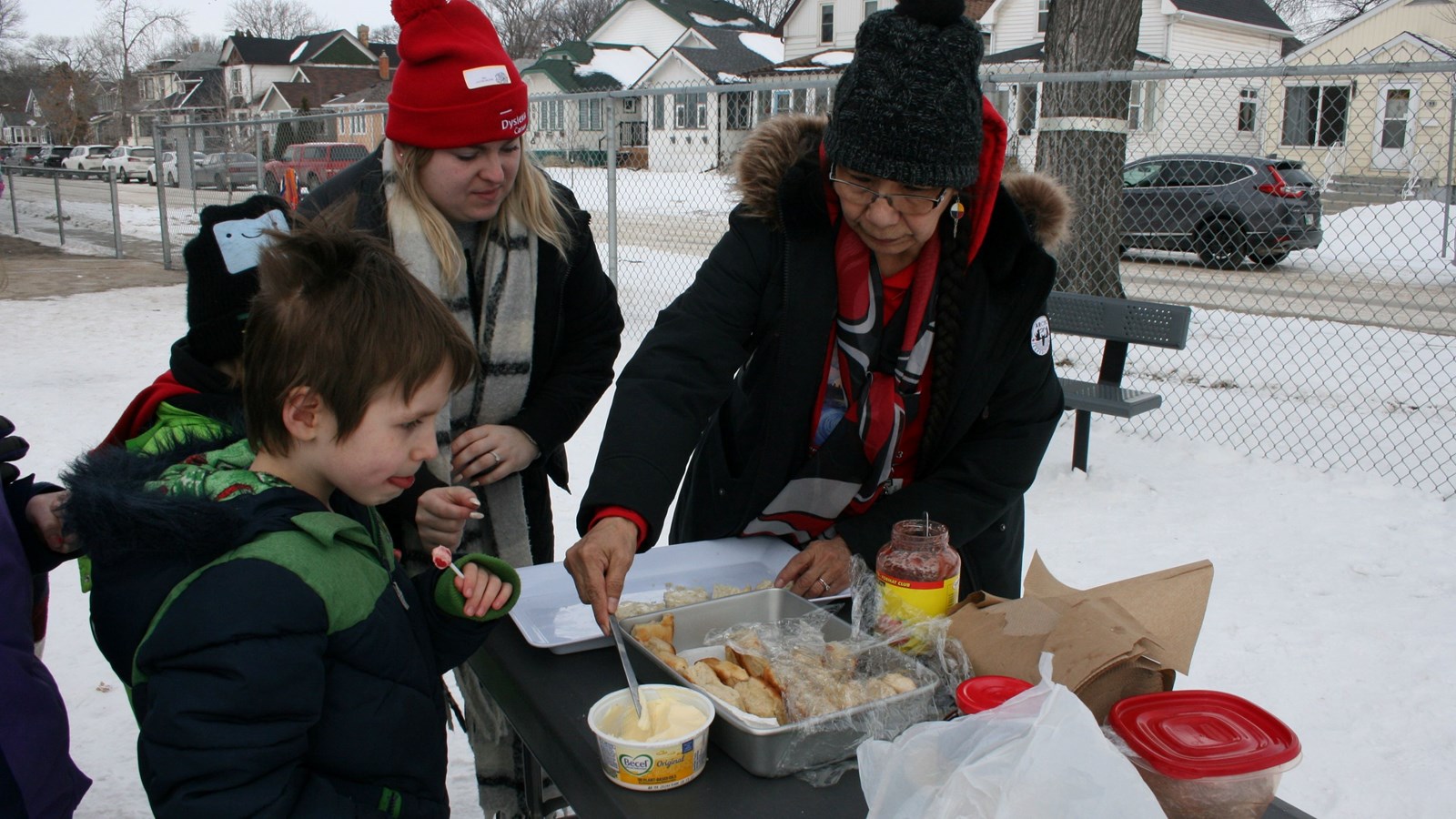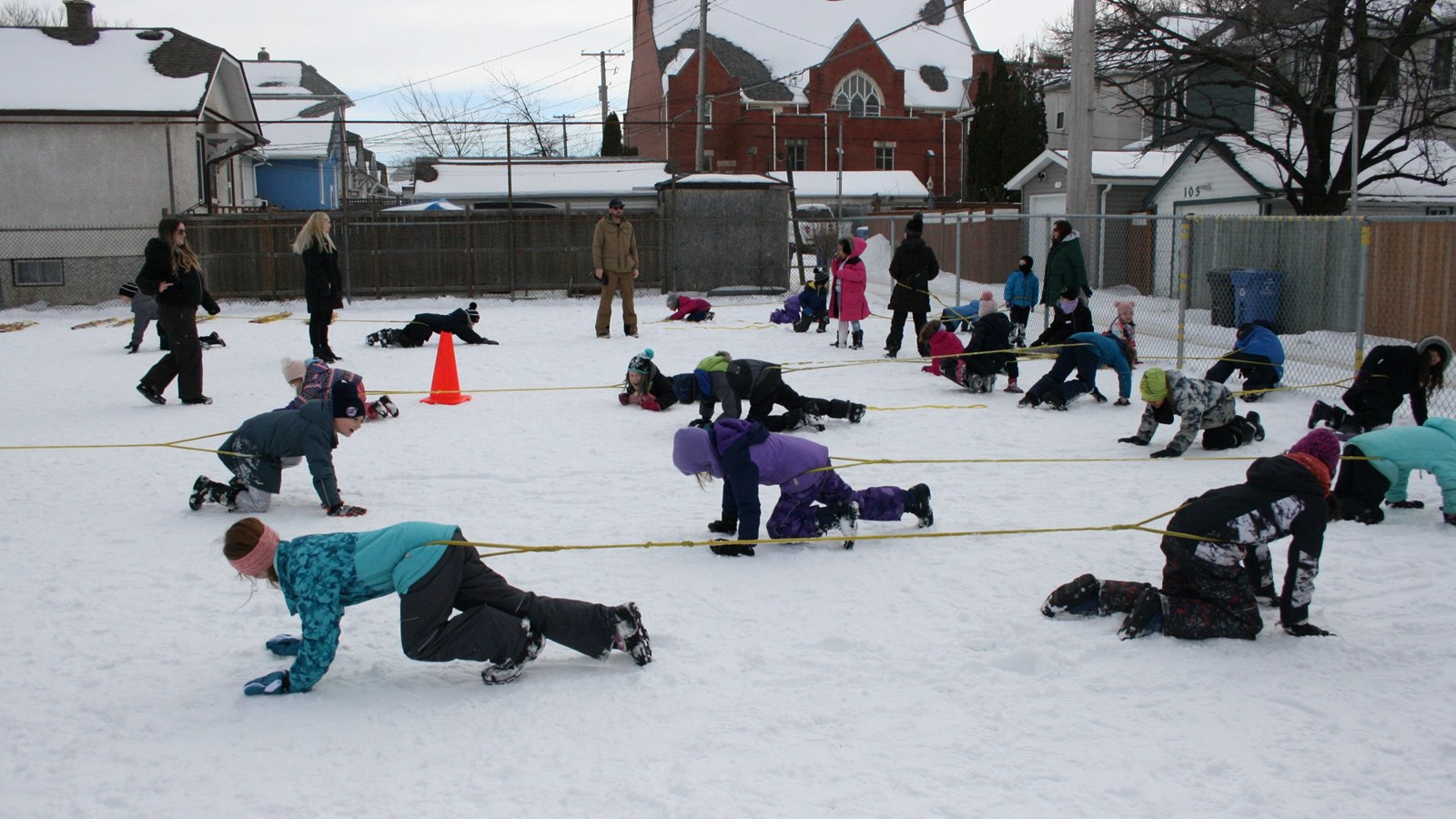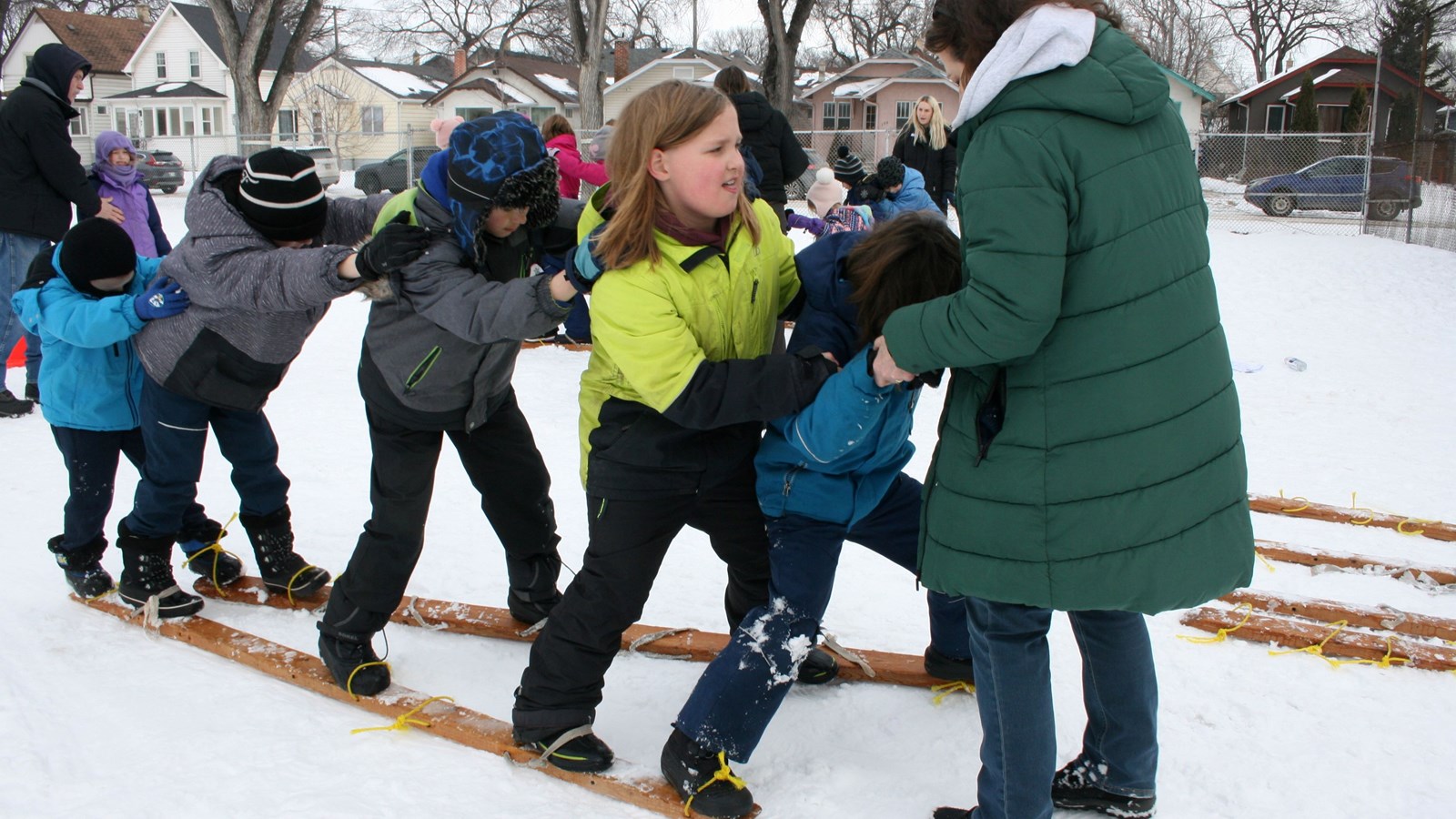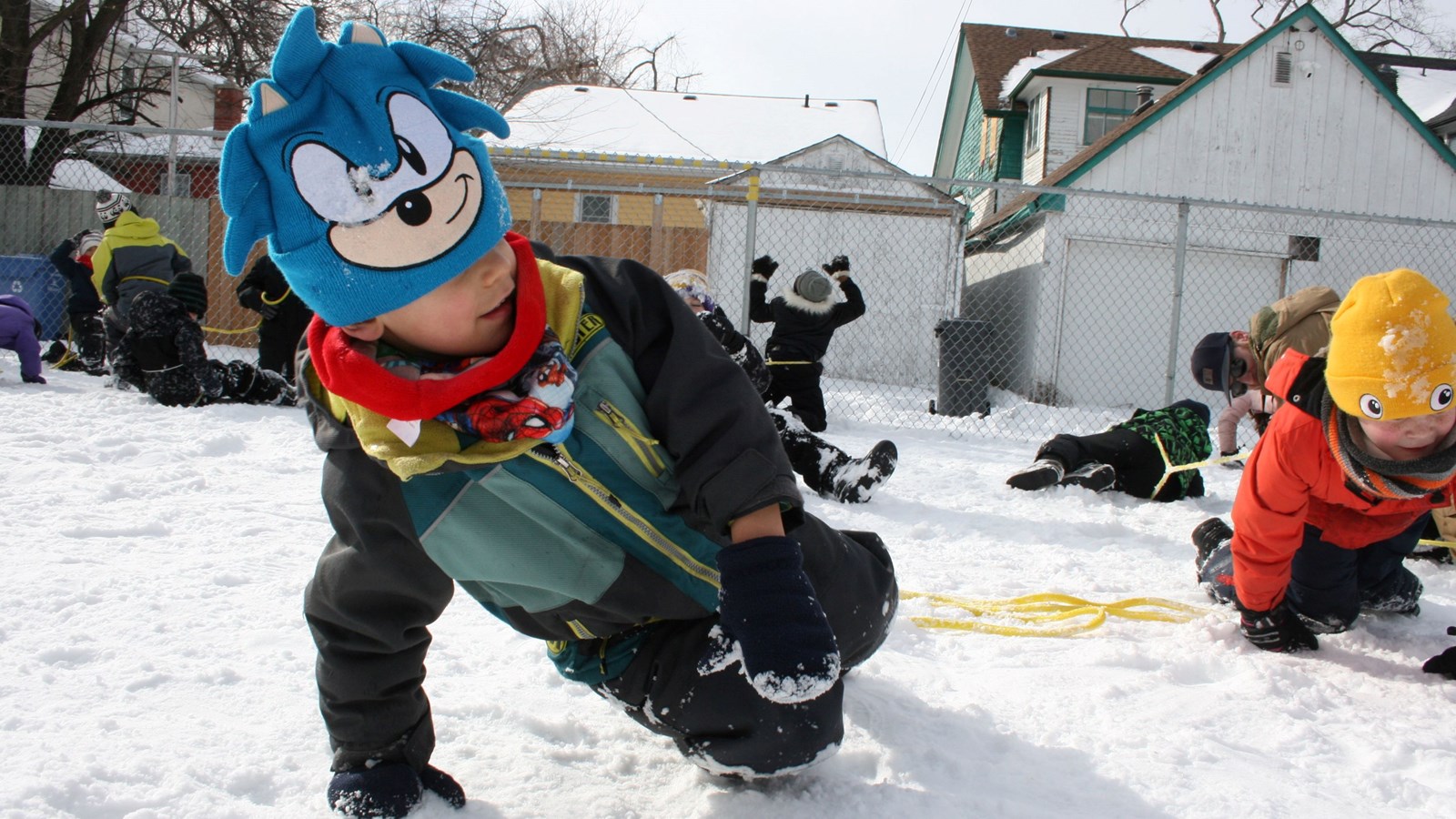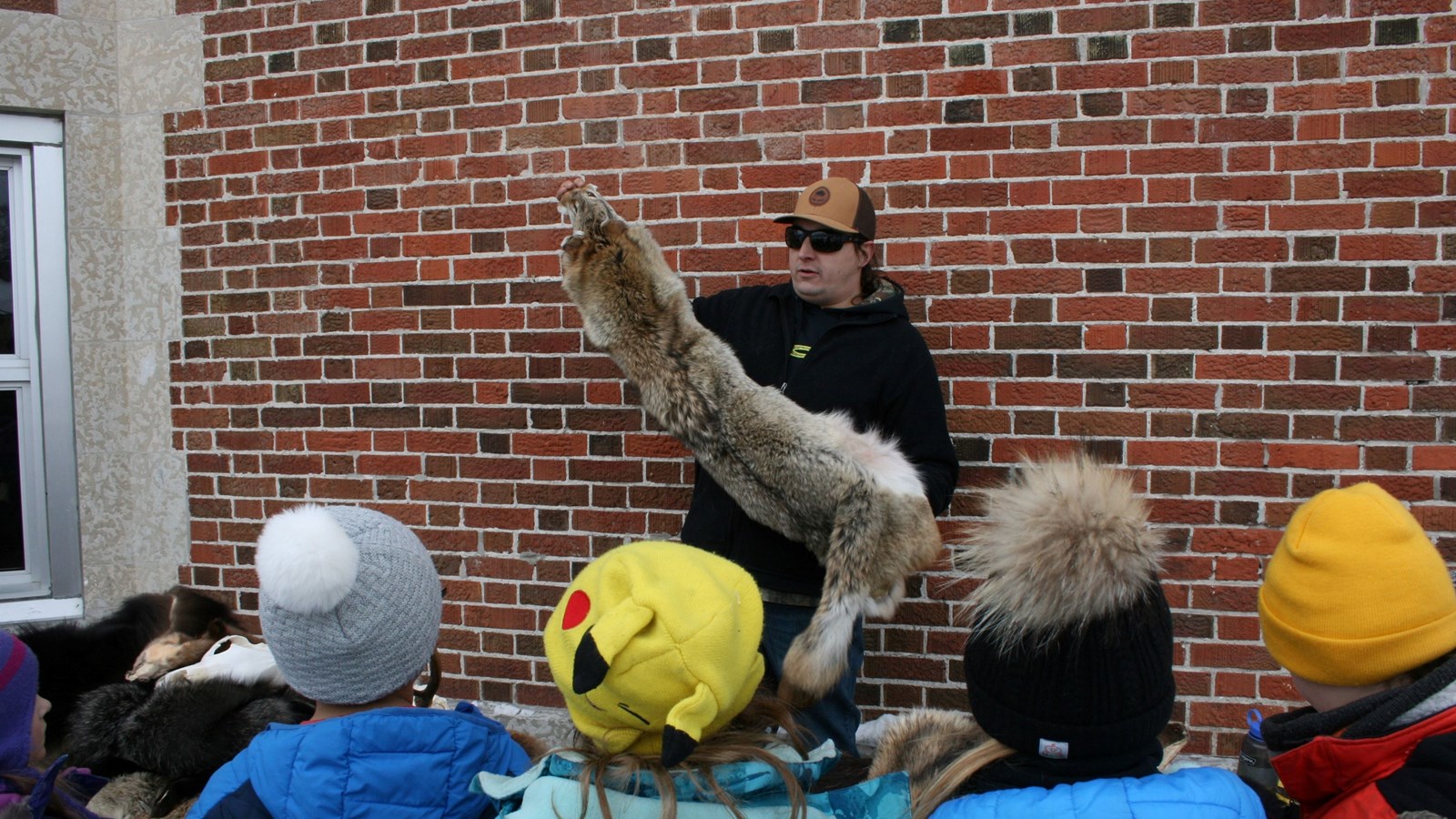Glenelm students learn off the land
March 7, 2024 News Story
Glenelm School students learned that the land is the greatest teacher.
On March 1, the Glenelm schoolyard was the site of an Indigenous land-based learning day. Dubbed Wahkohtowin Day, the event saw students playing traditional games, while also learning about different aspects of Indigenous culture.
Wahkohtowin is a Cree word that means kinship and refers to the interconnected nature of relationships, communities, and natural systems.
“Part of reconciliation is rebuilding relationships and one of the most important relationships is the one we have with the land,” said Arielle Garand, who teaches Grades 4 and 5.
“All year, Glenelm teachers have been including Indigenous perspectives in the classroom. One thing we thought was important for students to really understand on a deep and personal level is the land acknowledgement. We thought that including meaningful, authentic learning activities for students to do outside was a great building block to continue working towards truth and reconciliation.”
The land-based learning day included several different sessions, including Indigenous games, teepee teachings, and a presentation by Prairie Wildlife Rehabilitation.
Another session featured a reading of Awâsis and the World-Famous Bannock. The reading was followed with taste of homemade bannock.
“We also have Tall Tines Taxidermy, which is a Métis-run taxidermy service,” Garand said. “They’re here to give students a hands-on experience with touching different furs and understanding the importance of harvesting and having a good relationship with the animals around us.
“We also have a scavenger hunt with different land-based objects, with the name for each item translated in Ojibwemowin and Cree. Also, the Treaty Commission of Manitoba is inside doing lessons on how to become a water protector.”
Karina, a Grade 6 student, said Wahkohtowin Day was a great educational experience.
“We got to see some different animal hides and we learned about the teepee and what the different poles stand for. One stands for truth. Another stands for love,” Karina said.
“It’s good to learn things outside because they lived outside. The teepees were outside. They did everything based off the land.”
Alexandria, a Grade 4 student, said there’s a simple reason why learning about Indigenous culture is important.
“We live on Treaty 1 land and the people who were the first to live here were Indigenous people,” Alexandria said.
According to Garand, it’s important that educators bring learning back to the land.
“I always tell my students that they’re like plants. They need fresh air and sunshine to grow,” Garand said.
“The land is our original teacher. For students to really buy in and understand the authenticity of what we’re doing, they need to see it, feel it, and do it. Outdoor education is all those things.”

